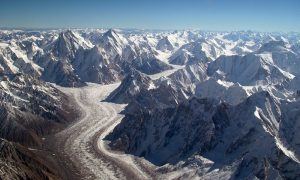Karakoram Anomaly:

A study investigated why glaciers in the Karakoram Range of Central-South Asia have not been as affected by Climate Change as others.
- They have attributed this phenomenon called Karakoram Anomaly to the recent revival of Western Disturbances (WDs).
- The ‘Karakoram Anomaly’ is termed as the stability or anomalous growth of glaciers in the central Karakoram, in contrast to the retreat of glaciers in other nearby mountainous ranges of Himalayas and other mountainous ranges of the world.
- It is for the first time that a study brought forth the importance that enhanced western Disturbance (WD)-precipitation input during the accumulation period plays in modulating regional climatic anomalies.
- Previous studies have highlighted the role of temperature in establishing and sustaining the anomaly over the years
Western Disturbances (WDs) are the primary feeder of snowfall for the region during winters. - The study suggests they constitute about around 65% of the total seasonal snowfall volume and about 53% of the total seasonal precipitation, easily making them the most important source of moisture.
- Further, the precipitation intensity of WDs impacting Karakoram has increased by around 10% in the last two decades, which only enhances their role in sustaining the regional anomaly.
- The Karakorams are part of a complex of mountain ranges at the centre of Asia, including the HinduKush to the west, the Pamirs to the northwest, the Kunlun Mountains to the northeast, and the Himalayas to the southeast.
- The Karakorams cover parts of Afghanistan, China, India, Pakistan, and Tajikistan.




